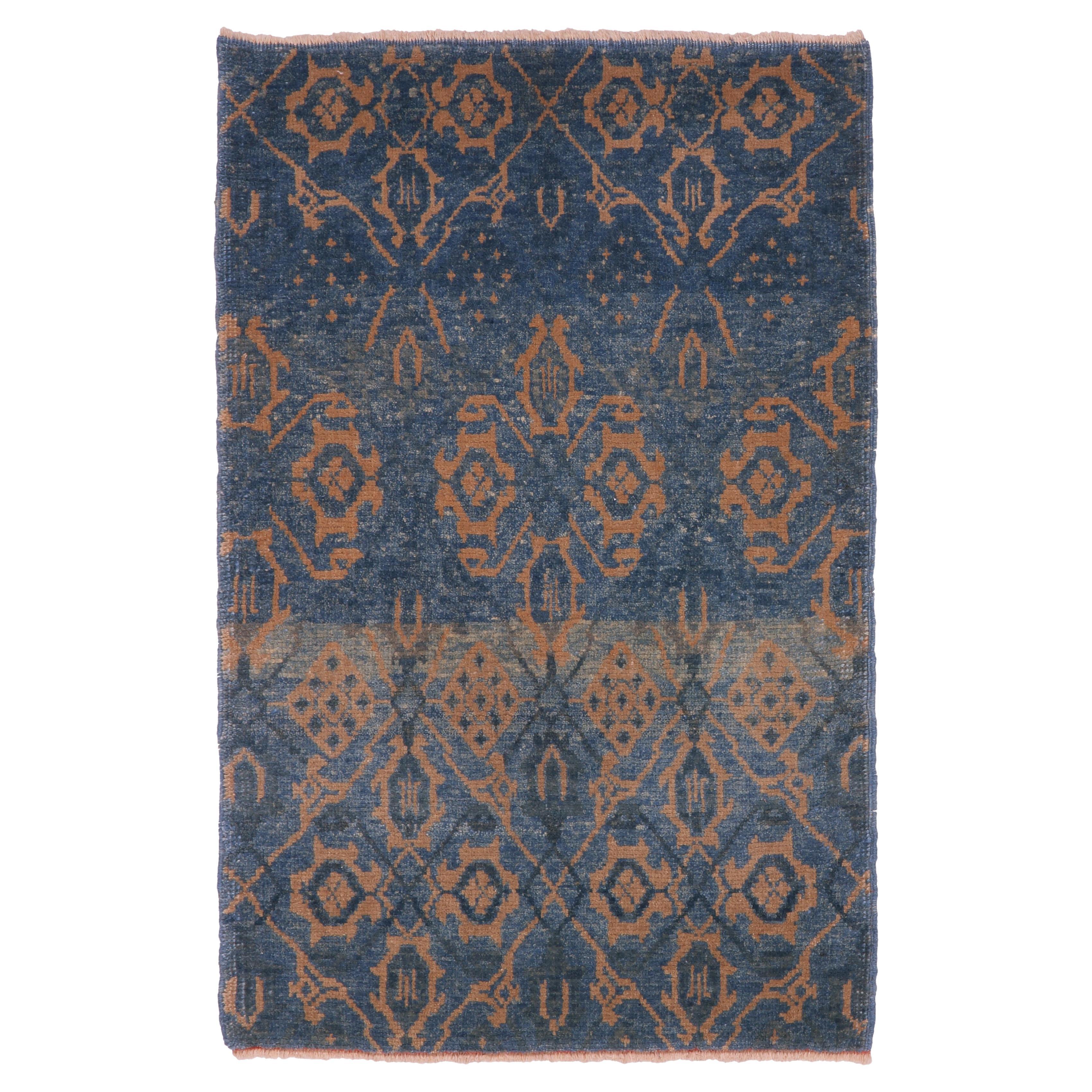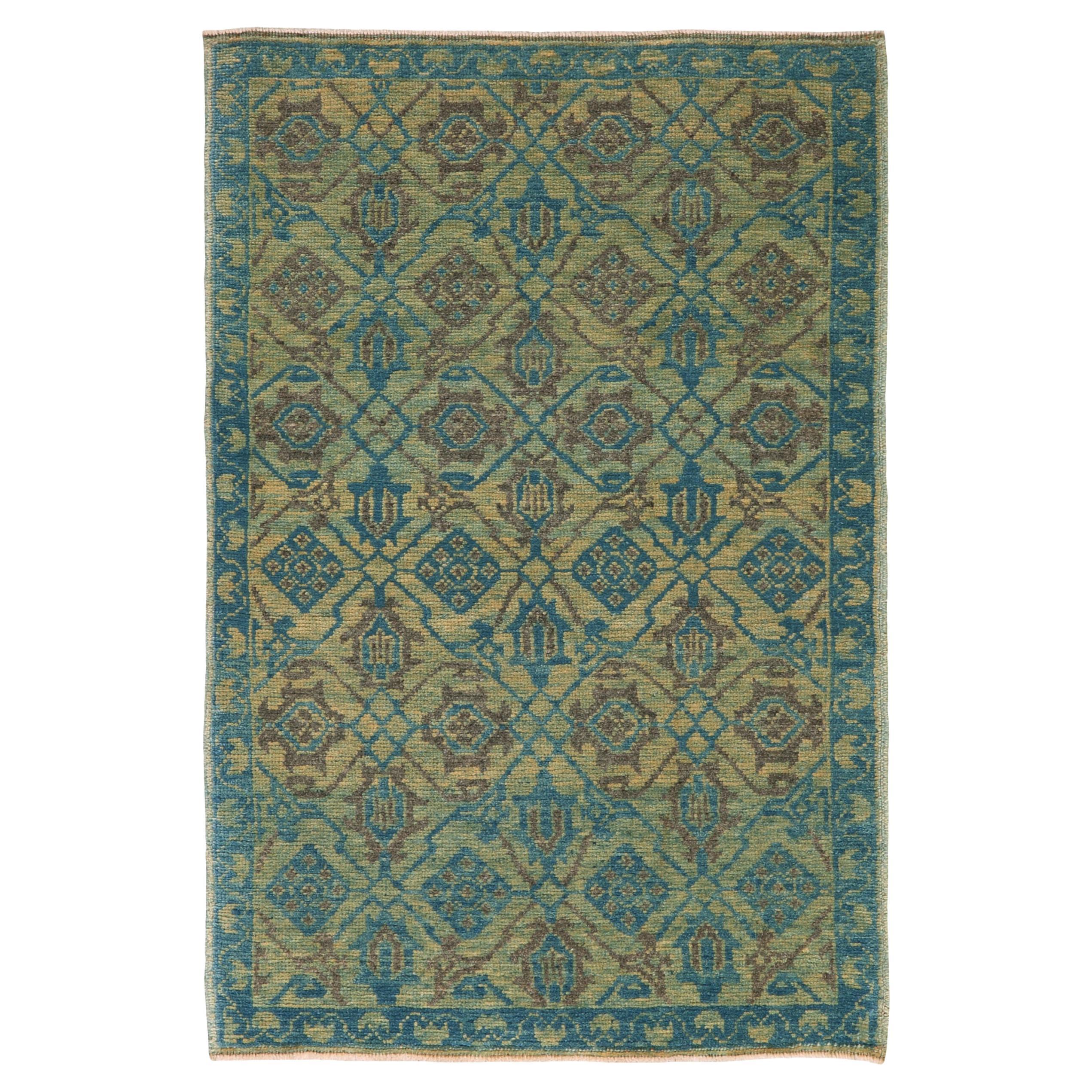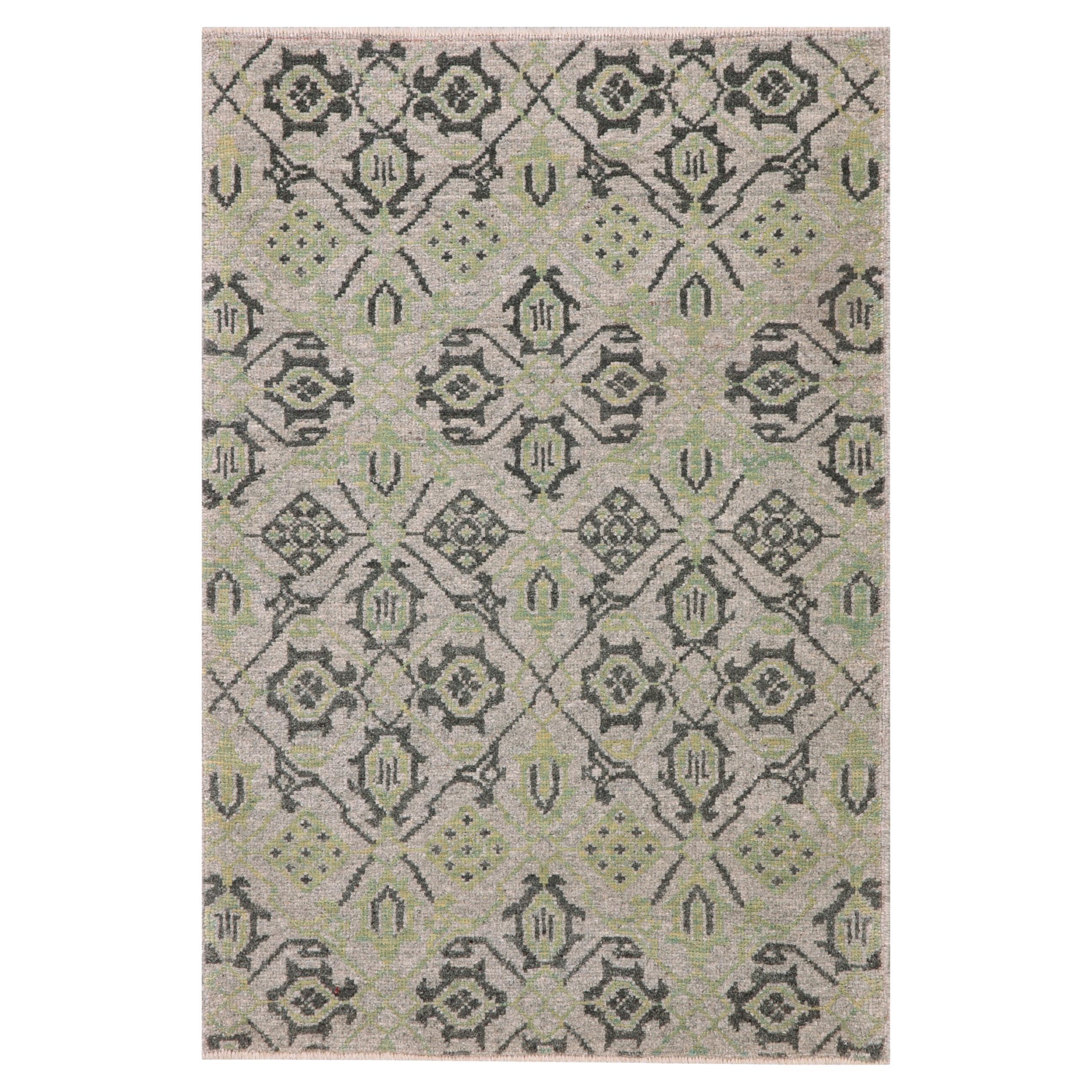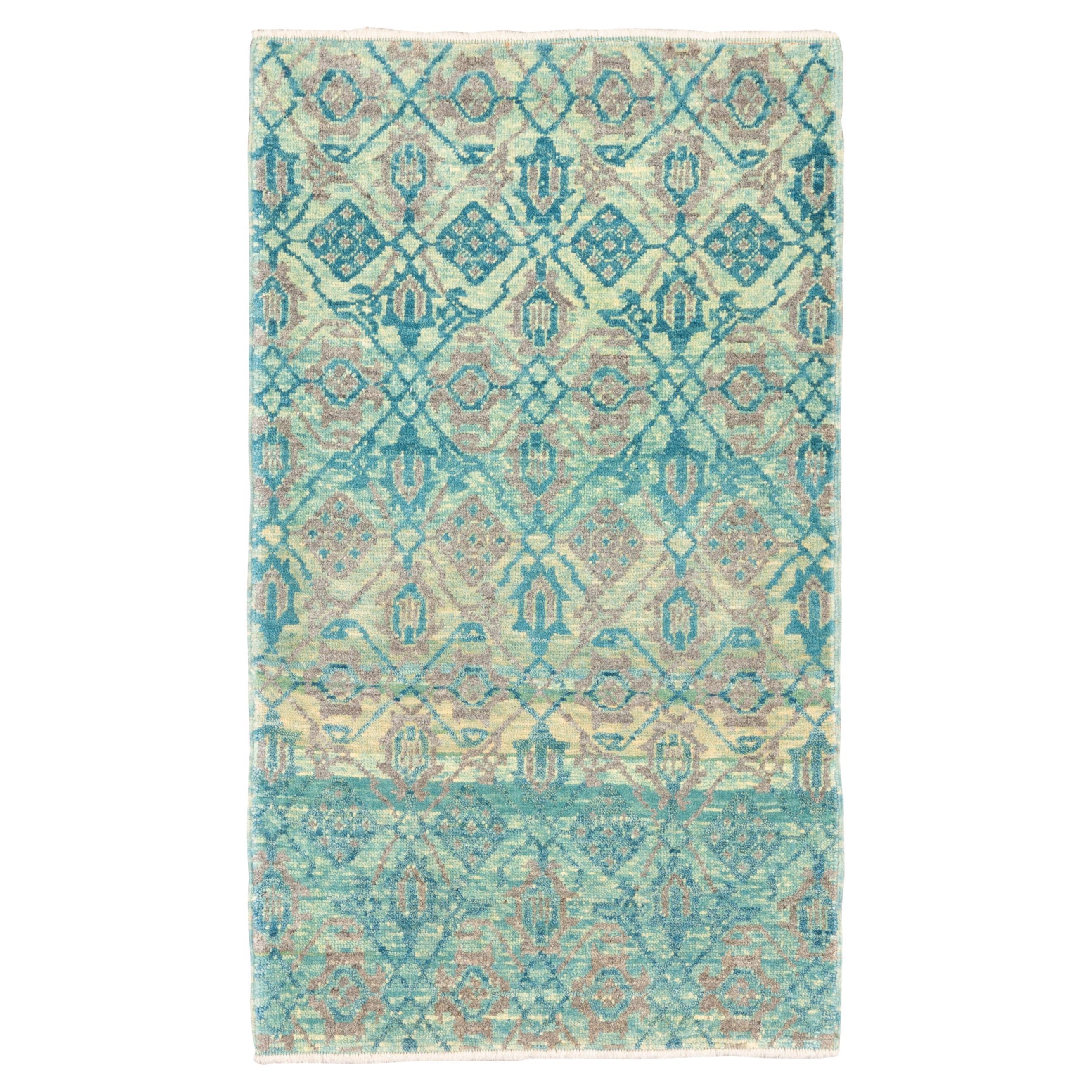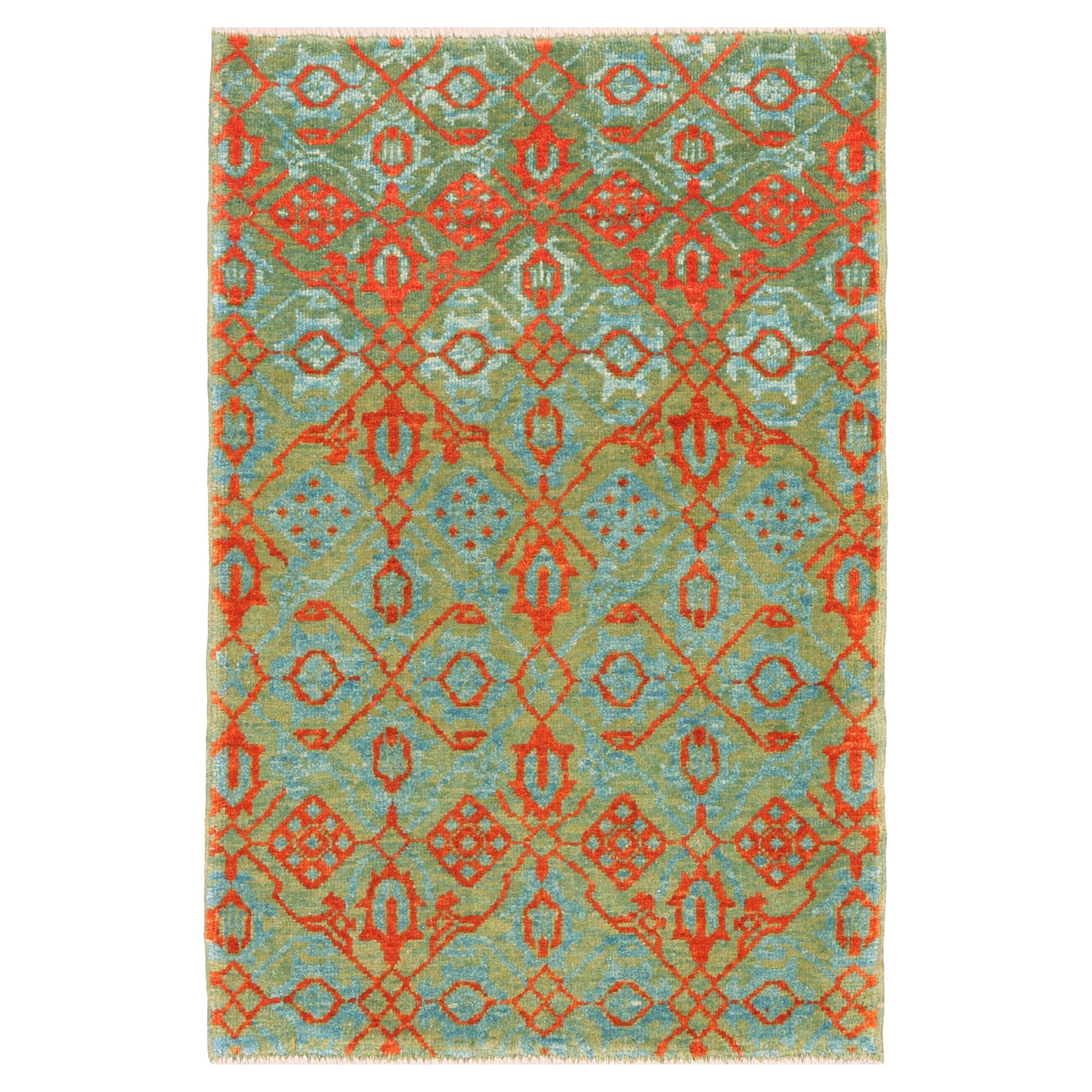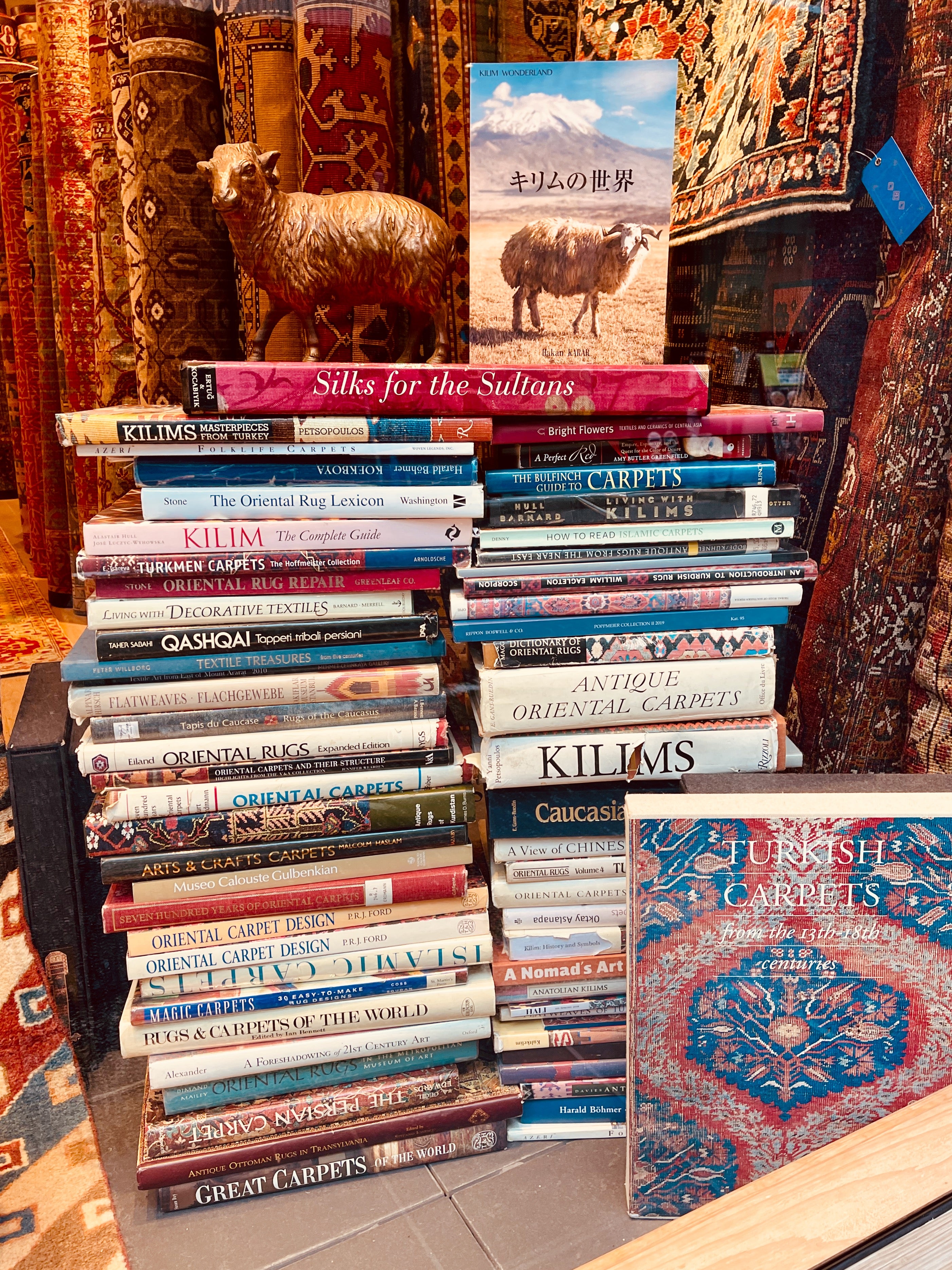Items Similar to Ararat Rugs Anatolian Yastik Rug Revival Turkish Wagireh Carpet Natural Dyed
Want more images or videos?
Request additional images or videos from the seller
1 of 5
Ararat Rugs Anatolian Yastik Rug Revival Turkish Wagireh Carpet Natural Dyed
About the Item
This small piece exhibits a forceful design on a small scale in a small area. These kinds of small Turkish yastiks or mats are found which contain an extraordinary amount of power within a very small space. There are large diamond medallions in the center-so large it almost touching the edge of the field. Even though the central motive is already robust and large in size, there is yet room in which to comfortably place the other motifs in the corners. Among specialists, Anatolian carpets kilims are believed to record symbols of ancient values and ideas, a tradition that dates back several millennia and was only displaced during the industrial age. The Anatolian kilim design tradition probably owes its lucky survival to the fact that pile-woven carpets look more precious and would already have had a higher prestige value several millennia ago. Kilim weaving was, therefore, able to survive undisturbed within an intact cultural context for a long period of time. The design of this rug is interpreted with unusual floral borders and vivid colors are chosen for this rug.
Color summary: 9 colors in total, most used 4 colors are;
Black Chocolate 434 (Pomegranate – Spurge – Madder Root)
Burlywood 135 (Spurge – Madder Root)
Imperial Red 426 (Madder Root)
Natural Wool Color 320 (Natural Sheep’s Color)
Group: Anatolian Rugs Family
Area: West Anatolia
Material of Pile: Natural Dyed Hand-spun Wool
Material Warp / Weft: Wool on Wool
Structure: Symmetrical knot on depressed warp inclining to the right
Knots Density: 39x45
Production Place: Eastern Anatolia – Tatvan Province
Stock Location: Tokyo
Size (EU): 53 X 127cm
Size (US): 1'8" X 4'2"
Area (EU): 0.7m²
Area (US): 7.2ft².
- Creator:Ararat Rugs (Manufacturer)
- Dimensions:Width: 20.87 in (53 cm)Length: 50.01 in (127 cm)
- Style:Oushak (In the Style Of)
- Materials and Techniques:
- Place of Origin:
- Period:
- Date of Manufacture:2021
- Production Type:New & Custom(One of a Kind)
- Estimated Production Time:Available Now
- Condition:
- Seller Location:Tokyo, JP
- Reference Number:1stDibs: LU8206233953932
ARARAT RUGS
We know and believe that the geography we come from, our past, and our lifestyle are the most important bond between us to carry the oriental carpet art and culture to the next generations along with our core values in our ongoing growth journey.
We are aware that the way to achieve this goal and carry this priceless art and culture to the future depends on a lot of work with all our people every day while adhering to our core values.
For us, art is meaningful in the sense that it brings together various cultures around the world. It is an honor for us that oriental carpet art and culture have been instrumental in this for centuries and that we are a part of this business.
We are tirelessly keeping an eye on auction house information around the world about carpets. New York's Metropolitan, London's Victoria & Albert Museums, and other famous art museums, as well as small specialized museums that house private collections, and books about oriental carpets to collect information on outstanding carpet designs and patterns from around the world. It's our Self-improving and Self-developing culture.
As Turkish Culture of Hospitality, the Kurdish Culture of Generosity, and as Japanese Culture of Business Punctuality; are the most important values that this multicultural background has taught and bequeathed to us. It is essential and valuable for us that you feel this feeling not only by looking at our oriental carpets but from the moment you contact us.
About the Seller
5.0
Gold Seller
These expertly vetted sellers are highly rated and consistently exceed customer expectations.
Established in 1970
1stDibs seller since 2023
12 sales on 1stDibs
Typical response time: <1 hour
- ShippingRetrieving quote...Ships From: Tokyo, Japan
- Return PolicyA return for this item may be initiated within 7 days of delivery.
More From This SellerView All
- Ararat Rugs Anatolian Yastik Rug Revival Turkish Wagireh Carpet Natural DyedBy Ararat RugsLocated in Tokyo, JPThis small piece exhibits a forceful design on a small scale in a small area. These kinds of small Turkish yastiks or mats are found which contain an extraordinary amount of power wi...Category
21st Century and Contemporary Turkish Oushak Turkish Rugs
MaterialsWool, Natural Fiber, Organic Material
- Ararat Rugs Mamluk Wagireh Rug Lattice Pattern Revival Carpet Natural DyedBy Ararat RugsLocated in Tokyo, JPThis lattice pattern is composed of palmettes and leaves filling the various compartments against the imposing ground. One has the impression that it is only part of a larger scheme ...Category
21st Century and Contemporary Turkish Revival Turkish Rugs
MaterialsWool, Natural Fiber, Organic Material
- Ararat Rugs Mamluk Wagireh Rug Lattice Pattern Revival Carpet Natural DyedBy Ararat RugsLocated in Tokyo, JPThis lattice pattern is composed of palmettes and leaves filling the various compartments against the imposing ground. One has the impression that it is only part of a larger scheme designed 15th century rug from the Mamluk era, Cairo region, Eygpt. These designs have often been described as wagirehs or samplers and were said to have been used as weaver`s aids, or for demonstration purposes, made as a template or pattern for the carpet design and production of larger rugs, they are generally small pieces of the Size of a scatter rug or mat. Mamluk carpets originated in a physical environment that lacked the combination of abundant marginal grazing land and a temperate climate with cool winters that were common to most carpet-weaving areas in the Islamic world. While related to a broader tradition of Turkish weaving centered in Anatolia, far to the north, the designs of these carpets include atypical elements, such as stylized papyrus plants, that are deeply rooted in Egyptian tradition. Their unusual composition and layout probably represent an attempt to develop a distinctive product that could in effect establish a “Mamluk brand” in the lucrative European export market. The uncharacteristic color scheme—devoid of the undyed white pile and employing a limited range of three or five hues in much the same value—also suggests a conscious attempt to create a particular stylistic identity. Also virtually unique in the world of Islamic carpets is the S-spun wool. It has been argued that the tradition of clockwise wool spinning originated in Egypt because of the earlier Egyptian tradition of spinning flax into linen thread. Details of the plant’s botanical structure make it impossible to spin flax fiber in the more common counterclockwise direction utilized throughout the Middle East for wool and cotton. Mamluk carpets with the color combinations seen in the Simonetti are now generally accepted as part of an earlier tradition that has many links to the weaving of Anatolia, Iran, and Syria. The “three-color” Mamluk carpets, well represented in the Metropolitan’s collection, represent a later development that continued well after the Ottoman conquest of Egypt in 1517. Many such carpets may have been produced well into the seventeenth century, and possibly even later. (Walter B. Denny in [Ekhtiar, Soucek, Canby, and Haidar 2011]). The design of the rug is interpreted by our designers from our Mamlouk-type rugs collection and soft colors are used for this rug. Color summary: 3 colors in total; Moss Green 27 (Spurge – Indigo) Feldgrau 340 (Spurge – Madder Root – Indigo – Walnut Husk) Mount Olive...Category
21st Century and Contemporary Turkish Revival Turkish Rugs
MaterialsWool, Natural Fiber, Organic Material
- Ararat Rugs Mamluk Wagireh Rug Lattice Pattern Revival Carpet Natural DyedBy Ararat RugsLocated in Tokyo, JPThis lattice pattern is composed of palmettes and leaves filling the various compartments against the imposing ground. One has the impression that it is only part of a larger scheme ...Category
21st Century and Contemporary Turkish Revival Turkish Rugs
MaterialsWool, Natural Fiber, Organic Material
- Ararat Rugs Mamluk Wagireh Rug Lattice Pattern Revival Carpet Natural DyedBy Ararat RugsLocated in Tokyo, JPThis lattice pattern is composed of palmettes and leaves filling the various compartments against the imposing ground. One has the impression that it is only part of a larger scheme designed 15th-century rug from the Mamluk era, Cairo region, Eygpt. These designs have often been described as wagirehs or samplers and were said to have been used as weaver`s aids, or for demonstration purposes, made as a template or pattern for the carpet design and production of larger rugs, they are generally small pieces of the size of a scatter rug or mat. Mamluk carpets originated in a physical environment that lacked the combination of abundant marginal grazing land and a temperate climate with cool winters that were common to most carpet-weaving areas in the Islamic world. While related to a broader tradition of Turkish weaving centered in Anatolia, far to the north, the designs of these carpets include atypical elements, such as stylized papyrus plants, that are deeply rooted in Egyptian tradition. Their unusual composition and layout probably represent an attempt to develop a distinctive product that could in effect establish a “Mamluk brand” in the lucrative European export market. The uncharacteristic color scheme—devoid of the undyed white pile and employing a limited range of three or five hues in much the same value—also suggests a conscious attempt to create a particular stylistic identity. Also virtually unique in the world of Islamic carpets is the S-spun wool. It has been argued that the tradition of clockwise wool spinning originated in Egypt because of the earlier Egyptian tradition of spinning flax into linen thread. Details of the plant’s botanical structure make it impossible to spin flax fiber in the more common counterclockwise direction utilized throughout the Middle East for wool and cotton. Mamluk carpets with the color combinations seen in the Simonetti are now generally accepted as part of an earlier tradition that has many links to the weaving of Anatolia, Iran, and Syria. The “three-color” Mamluk carpets, well represented in the Metropolitan’s collection, represent a later development that continued well after the Ottoman conquest of Egypt in 1517. Many such carpets may have been produced well into the seventeenth century, and possibly even later. (Walter B. Denny in [Ekhtiar, Soucek, Canby, and Haidar 2011]). The design of the rug is interpreted by our designers from our Mamlouk-type rugs collection and soft colors are used for this rug. Color summary: 3 colors in total; Moss Green 27 (Spurge – Indigo) Mount...Category
21st Century and Contemporary Turkish Revival Turkish Rugs
MaterialsWool, Natural Fiber, Organic Material
- Ararat Rugs Mamluk Wagireh Rug Lattice Pattern Revival Carpet Natural DyedBy Ararat RugsLocated in Tokyo, JPThis lattice pattern is composed of palmettes and leaves filling the various compartments against the imposing ground. One has the impression that it is only part of a larger scheme ...Category
21st Century and Contemporary Turkish Revival Turkish Rugs
MaterialsWool, Natural Fiber, Organic Material
You May Also Like
- Vintage Turkish Anatolian CarpetLocated in New York, NYA vintage Turkish Anatolian carpet from the mid-20th century with cotton highlights.Category
Mid-20th Century Turkish Oushak Turkish Rugs
MaterialsWool, Cotton
- Vintage Turkish Anatolian CarpetLocated in New York, NYA vintage Turkish Anatolian carpet from the mid-20th century.Category
Mid-20th Century Turkish Tribal Turkish Rugs
MaterialsWool
- Vintage Turkish Anatolian CarpetLocated in New York, NYA vintage Turkish Anatolian carpet from the mid-20th century.Category
Mid-20th Century Turkish Tribal Turkish Rugs
MaterialsWool
- Vintage Turkish Anatolian RugLocated in New York, NYA vintage Turkish Anatolian rug from the mid-20th century. Measures: 7' 3" x 9' 2".Category
Mid-20th Century Turkish Tribal Turkish Rugs
MaterialsWool
- Vintage Turkish Anatolian Pictorial RugLocated in New York, NYA vintage Turkish Anatolian pictorial rug from the mid-20th century. A self-taught artist has depicted six buildings and one smokestack in a co...Category
Mid-20th Century Turkish Folk Art Turkish Rugs
MaterialsWool
- Antique Turkish Anatolian Tribal RugLocated in New York, NYAn antique Turkish Anatolian runner from the early 20th century. Anatolian, the rose-red field displays a geometric pattern of Memling guls (flowers), stars, cartouches-in-boxes and ...Category
Early 20th Century Turkish Rustic Turkish Rugs
MaterialsWool
Recently Viewed
View AllMore Ways To Browse
Natural Color Rug Large
Natural Root
Lucky 9
Imperial Rug
Imperial Rugs
Vivid Color Rug
Chocolate Large Rug
The Rug Specialist
Antique Consoles
Antique Console
One Side Table
Leather Lounge Used
Modern Wood Dining Table
Console Antique
Rectangular Dining
Fabric Upholstered Chair
Coffee Tables With Glass
Pair Upholstery Chairs

